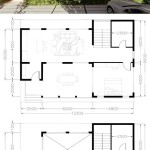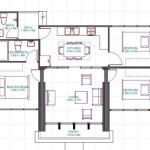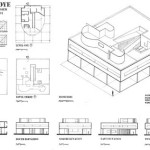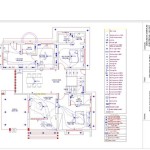House Planning In Village
House planning in a village is a crucial aspect that requires careful consideration. Unlike urban areas, villages have unique characteristics and challenges that must be addressed when designing a house. Here are some essential aspects to keep in mind while planning a house in a village:
1. Land Availability and Topography:
In villages, land availability is often limited, and the topography can vary significantly. It is essential to assess the available land and consider its contours, drainage patterns, and soil conditions. This information will guide the placement and orientation of the house.
2. Local Materials and Construction Techniques:
Villages often have access to locally available materials such as clay, bamboo, and stone. Incorporating these materials into the construction can reduce costs and promote sustainability. Traditional construction techniques, passed down through generations, can be employed to ensure the house is well-adapted to the local climate and conditions.
3. Water and Sanitation:
Access to clean water and proper sanitation is vital in rural areas. The house plan should include provisions for rainwater harvesting, groundwater extraction, and waste disposal systems. It is essential to consult with local authorities to understand the available water resources and sanitation practices.
4. Ventilation and Natural Lighting:
Proper ventilation and natural lighting are crucial for maintaining a healthy indoor environment. The house design should incorporate cross-ventilation and strategically placed windows to maximize airflow and reduce the need for artificial lighting during the day.
5. Space Planning and Functionality:
Villages often have extended families living under one roof. The house plan should consider the space requirements for different activities and ensure a functional layout that accommodates the needs of all family members. Common areas for socializing, cooking, and dining should be well-defined.
6. Climate Considerations:
The local climate plays a significant role in house planning. The design should take into account factors such as temperature variations, precipitation patterns, and wind direction. Proper insulation, shading, and roofing materials can help regulate indoor temperatures and protect the house from extreme weather conditions.
7. Access and Connectivity:
Accessibility to the house is essential, especially in remote villages. The house plan should consider the availability of roads, footpaths, and public transportation. It should also incorporate provision for parking and access for vehicles and livestock.
Conclusion:
House planning in a village requires a comprehensive approach that considers the specific characteristics and challenges of the rural environment. By incorporating sustainable materials, traditional techniques, and careful attention to space planning, ventilation, and climate considerations, it is possible to create houses that are not only functional and comfortable but also respectful of the local context.

Village House Plans How To Plan Floor

Village House Plans Houses How To Plan

40 X Village House Plan Plans Houses How To

Village House Plans 30x50 Houses

House Plan Village Greens Way Sater Design Collection

Village House Plans Open Houses

Ground Floor Plan Village House Design How To

Village House Plan 2000 Sq Ft First Floor Plans And Designs

Village Home Plan With 3 Bedroom Beautiful House Desgin Premshomeplan

Village House First Floor Plan Plans How To Houses








